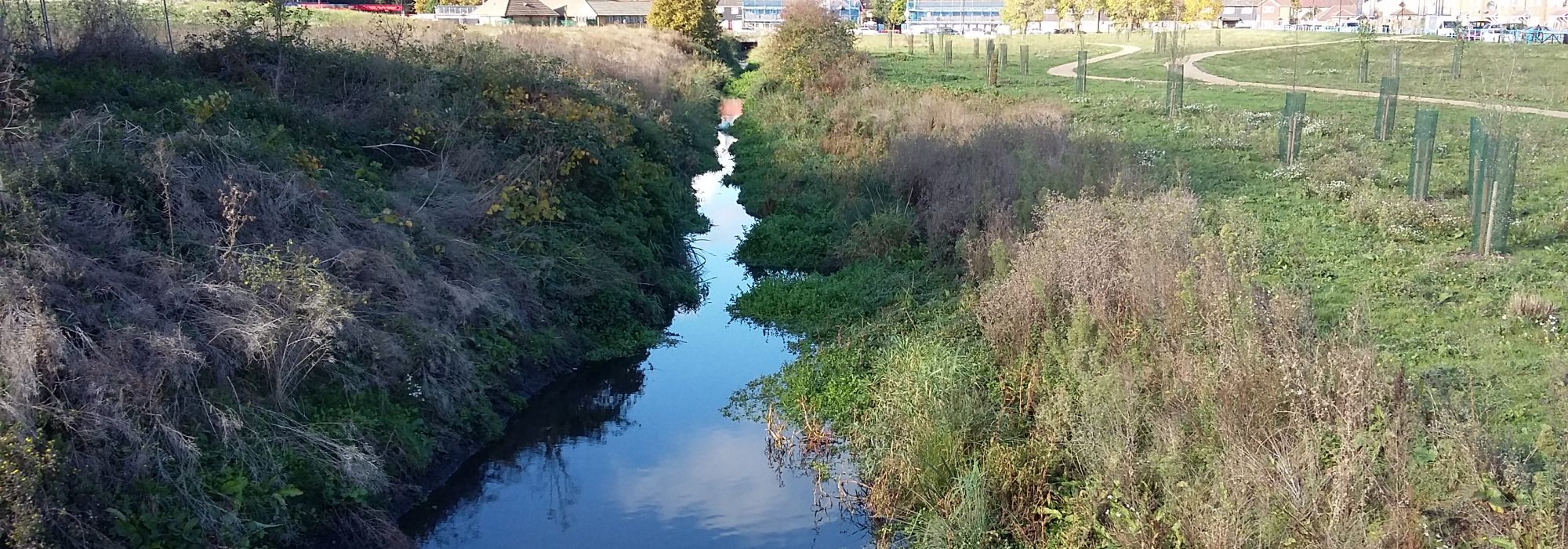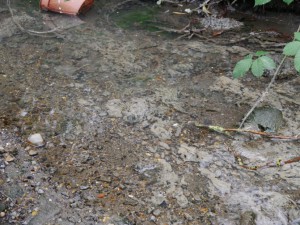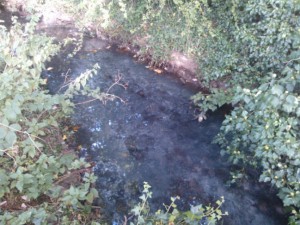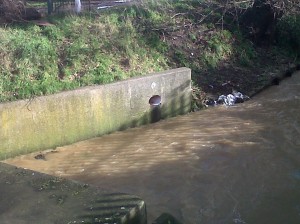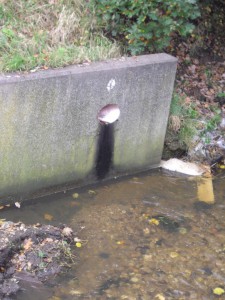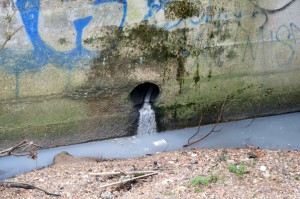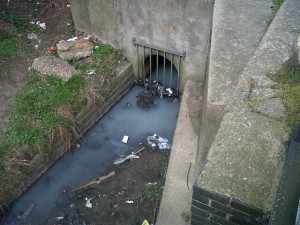Soap, SuDS and sewage fungus – some water cannot be cleaned by SuDS alone
Aimee Felus, Salmons Brook Healthy River Challenge Project Manager
When I began working on our Salmons Brook Healthy River Challenge, I knew the project would live up to its name, and I was up for the challenge. The Salmons Brook is a tributary of the River Lea (in Enfield, North London), and in one of the most polluted catchments in the UK. We have funding from Defra to develop six SuDS components to reduce diffuse urban pollution into the Salmons Brook. Nearly the whole brook runs through urban areas, so I knew we’d have plenty of locations needing treatment to choose from. From research I already knew we’d be tackling water with high phosphates and nitrates, and low oxygen. It was terribly polluted. What I didn’t realise was just how bad this pollution was.
We got to know our sites, and trained and activated a committed group of local volunteers to monitor water quality throughout the borough of Enfield. In the coming months we found out just how bad the situation was.
Sewage fungus and soap suds abound. Multiple misconnections and road run off mean this is what we’re dealing with:
1. Sewerage fungus in stream feeding Boxers Lake
2. Cloudy effluent from misconnections in the same stream
3. Siltation in heavy flow
4. The A10 runoff stains the wall black
5. Misconnection into the Salmons Brook
6. The Turkey Brook, another stream treated as a gutter
Now, SuDS are great, but they don’t work miracles. We would need to do more than just install SuDS to get these streams cleaned up. The whole system and the way we treat and view water is broken.
That’s why it’s so great to have our Salmons Brook project running alongside our Love the Lea campaign. Love the Lea is calling for SuDS across East London to secure a long life for the Deephams Sewage Treatment works upgrade and ensure the system doesn’t become overwhelmed in just a few years’ time. The campaign is crucially raising awareness of misconnections amongst local people, something which is missing from many efforts to tackle misconnections. We find that people simply don’t know what a misconnection is, and most are horrified if they discover they are polluting their local stream. This will be a key factor in the success of our Salmons Brook project. Through Love the Lea we’re also training local volunteers to monitor their watercourses, spot and report pollution, so the Environment Agency and Thames Water know where the misconnections hotspots are. A long running partnership with University College London is allowing us to take baseline pollution data, to ensure we can quantify our results when the SuDS are installed and cleansing the water.
By taking this wider ranging approach with SuDS creation, partnerships and campaigning, we stand a real chance to make a lasting deep change for Enfield’s streams and rivers. And we won’t stop there. All boroughs need SuDS and more connection with people and their local water. We’re hoping our project can demonstrate an excellent way to achieve this. Watch this space!
